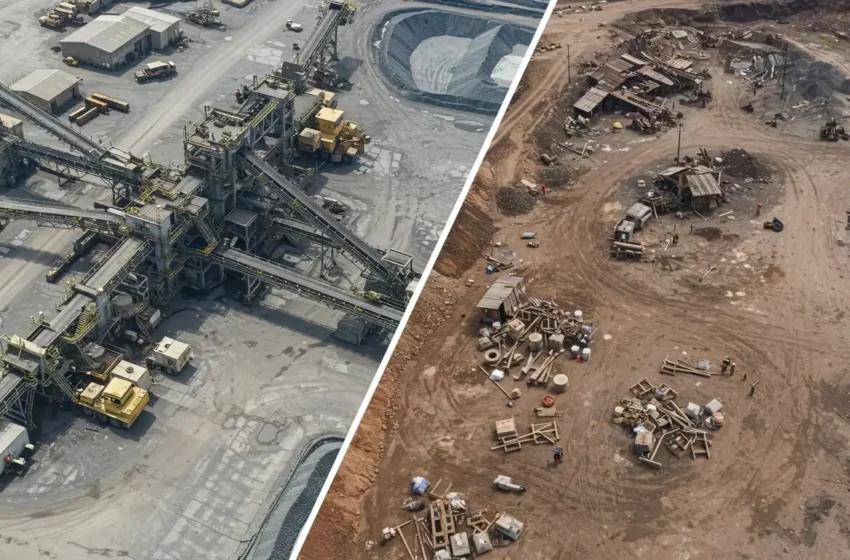The untold story of South Africa’s illegal miners and abandoned mines

A picture showing both legal and illegal mining areas.
This week’s police operation in Barberton, Mpumalanga, where roughly 1,000 illegal miners and undocumented immigrants were removed from an abandoned mine, is the latest reminder of a problem that has plagued South Africa for decades. While the arrests grabbed headlines, they are just one small part of a sprawling and deeply entrenched crisis that extends far beyond any single raid.
Illegal mining, known locally as zama zama activity, remains a nationwide challenge, particularly in provinces like Gauteng, Free State, and Mpumalanga. South Africa has more than 6,000 abandoned or ownerless mines, many left unsecured for years. These derelict sites offer easy access for miners seeking remnants of gold or other precious minerals. The Department of Mineral Resources and Energy estimates that billions of rand are lost annually through illegal mining operations, undermining legitimate businesses, tax collection, and investor confidence in the country’s mineral sector.
Behind the figures are human stories of desperation. With unemployment among the highest in the world, particularly among young people, many see illegal mining as the only way to put food on the table. A few grams of gold dust can earn more in a day than many low-wage jobs pay in a week. Adding to this, thousands of undocumented migrants from neighbouring countries, including Zimbabwe, Lesotho and Mozambique, cross into South Africa each year, lured by the hope of earning a living underground. Poverty and lack of opportunity make the risks seem worth taking.
Those risks, however, are severe. Life in abandoned mine shafts is fraught with danger—tunnel collapses, poisonous gases, underground fires and a lack of proper ventilation have claimed countless lives. When violence breaks out between rival groups, sometimes armed with homemade weapons or guns, it often spills over into nearby communities. Residents in mining towns regularly report rising crime, drug abuse and a sense of lawlessness linked to these illegal operations.
The damage does not stop with human casualties. The environmental impact of illegal mining is extensive and long-lasting. Open shafts, acid mine drainage and contaminated groundwater destroy ecosystems, poison rivers and disrupt agriculture. Rehabilitation of these sites can take decades and cost the state billions, yet many illegal operations continue unchecked.
Experts say the industry is not simply made up of desperate workers; it is also driven by sophisticated criminal syndicates that organise operations, supply equipment, and smuggle the extracted minerals out of the country. Vulnerable miners often earn a fraction of the profits, while powerful networks higher up the chain benefit enormously. Allegations of corruption have dogged the fight against illegal mining for years, with compromised security personnel and law enforcement officers accused of turning a blind eye or even facilitating operations.
Government crackdowns, such as the Barberton raid, have become routine. Task forces combining police, army units and private security firms regularly conduct raids on illegal mining hotspots. But critics argue these operations do little more than temporarily disrupt activity. Without securing abandoned mines, dismantling powerful syndicates, or addressing the root causes of poverty and unemployment, thousands of miners will simply return underground as soon as authorities leave.
Some progress has been attempted through small-scale mining permits designed to bring artisanal miners into the formal economy, but the process has been slow and bogged down by red tape. Rehabilitation of abandoned mines also lags far behind, leaving vast stretches of unsecured land vulnerable to repeated exploitation.
The Barberton operation highlights the scale of South Africa’s illegal mining crisis but offers no lasting solution. Until the country combines strong law enforcement with real economic alternatives, tighter border controls, and decisive action against the criminal networks that profit from illicit trade, zama zama activity will remain a dangerous, persistent part of South Africa’s mining landscape.

